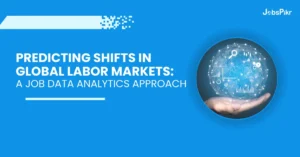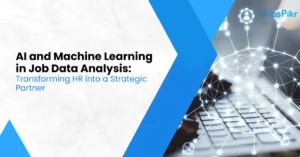As more organizations are driven towards implementing hybrid working models to keep up with the ongoing post-pandemic effects. Deciding how to consolidate the office footprint is a critical decision for HR leaders and workforce strategists to make. Implementing talent intelligence for optimally designing location strategies is the way forward. Big organizations across domains like Google and Microsoft thrive on labor market data to discover micro hubs for their hybrid workforce.
So what is a “Location Strategy”?
We keep hearing about offices being shut suddenly and with it comes layoffs, check out the latest news from companies like Meta and Twitter facing immense backlash from their workforce and the industry. This generation’s workforce has seen it all, starting from changes in working patterns, loss of jobs, and the rise of the internet and intelligence. In a globalized world, location strategy has carved its path into being one of the important factors to consider for an organization’s success story.
Location strategy is the process to know where their offices must be located for shortlisting micro hubs and consolidating offices. A comprehensive tool like talent intelligence incorporates labor data to provide insights into talent availability, cost of labor, experience, and talent competencies like skills and certifications. For most companies, the cost of labor is the largest expense while expanding to different locations and finding the right mix of talent. Working with a talent intelligence team comes as a handy solution for developing a workforce strategy.
Granular Labor Market Data for HR Leaders
When it comes to on-site expansion, being at the right place, at the right time, and for the right reasons, becomes imperative. Organizations are navigating through these new working norms to drive sustainable change. Rethinking and reshaping their workforce strategies, diving into newer opportunities. According to a report published by Human Capital, the location where people work is changing at an unprecedented rate. About 81% of organizations are implementing hybrid working models.
Granular labor market data helps to enable growth, boost productivity, and increase efficiency. HR leaders often look into job data to drive a competitive edge and choose the right micro-working hubs to be future-ready and build a robust workforce. Since finding and retaining talent is the most important asset and expense to the company, HR strategists can consider these metrics derived from talent intelligence tools, like JobsPikr.
Talent Quality and Availability
Analyze job market data from two complementary perspectives – job skills and demographics to tap into the best markets and geographies. Jobs data often helps to address pain points and find markets that could be a good economic, cultural, and diversity fit; allowing companies to grow effectively and optimally.
Talent Demand
One of the main metrics to understand job data is tapping into talent supply and demand. How many workers are available with a certain job title, what are the trending skills, and the kind of remuneration offered in the market? Check the number of job postings and the type of companies that are actively recruiting similar talent. Tap into markets and organizations with diverse talent.
Where can Location Strategy Help?
HR leaders and strategists look at data to get prepared for two scenarios. One is for expansion and the other is for consolidation of the workforce. This process is often backed by labor data and in this space, location strategy comes to life.
For Expansion
Talent intelligence is quite impactful in identifying new markets and tapping into the supply and demand side of data. Ideally, companies look for a sustainable talent pool to fill the current and upcoming job vacancies. Considering the cost of talent in the new geographies is also important versus the cost of talent in the current location. Companies can have a distinct take on shortlisting sites with the right location strategy.
For Consolidation
Company expansion often receives the most attention from its industry. However, using the right talent intelligence tool will help you tap into strategies to consolidate sites and embrace a hybrid working model. With the rise in remote working trends, the physical office space consolidation trend is here to stay. Create working hubs based on the occupation of your workforce with a purpose and foresight.
Rethink Location Strategy – Build Resilience
The recent outbreak of the pandemic is just one of many examples of how economic and geopolitical forces can hit the markets hard, leaving companies just about minimal time to recover. Human resources and workforce strategists must plan ahead to mitigate any and all risks. Onboarding a TI team and working with a talent intelligence tool is one of the many initiatives companies can take for building resilience across functions. Remote work and hybrid models are on the rise, disrupting the traditional working models, and the location strategy is here to stay for the better.
To discover how you can implement the right location strategy for building an agile workforce, contact sales@jobspikr.com for scheduling a demo.



